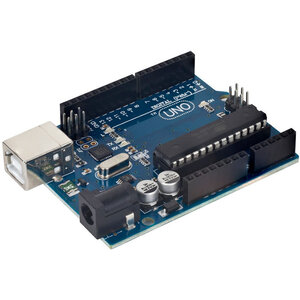Categories
- Quadcopter
- Aquaculture
- Raspberry Pi
- Video
- Components
- Gadgets
- Auto & Outdoors
- Home Automation & Security
- Audio
- Mobile Accessories
- IT
- Hobby
- Tools, Test & Mesurement
- Drones
- Drone Battery
- Spare Parts
- Remote Control Drone
- Fishing Release
- Racing Drones
- Autel EVO 2
- FPV Drone
- Mini Drone
- Drone with Camera
- Drones with FPV Display
- Beginner Drones
- GPS Drone
- Wifi FPV Drones
- Waterproof Fishing Drone
-
DJI Drones
- DJI Drone Accessories
- DJI Air 2S
- DJI Drone Spare Parts
- DJI Enterprise
- DJI FPV Racing Drone
- DJI Inspire Drone
- DJI Mavic Air
- DJI Mavic Drone
- DJI Mavic Mini
- DJI Mavic Mini 2
- DJI Spark Drone
- iFlight Racing Drones
- Mavic 2
- Mavic air 2
- Mavic Air 2 fly More combo
- Mavic Air 2 RTF
- Mavic Pro Platinum
- Phantom 3 Drone
- Phantom 4 Advance
- Phantom 4 Drone
- Phantom 4 Pro
- LED Light
- LED Lantern
- LED String / Fairy Lights
- LED Work Light
- LED Party Lights
- LED Torch
- LED Head Torch
- Household LED Light
- 12V LED Lights
-
LED Strip Lights
- Green LED Strip Light
- Power Supply
- Red Led Strip Light
- USB LED Strip Light
- Yellow LED Strip Light
- Accessory
- Blue LED Strip Light
- Neon LED Strip Light
- Rigid LED Strip Lights
- White Led Strip Light
- RGBW LED Strip Lights
- Digital LED Light Strip
- 2835 LED Strip Light Kits
- RGB LED Strip Light
- 5050 LED Light Strip Kit
- Toys
- HDMI
- HDCP Converter
- IQ4 Compatible HDMI Products
- HDMI Wall Plate Socket
- HDMI Audio Extractor
- HDMI Matrix Switcher
- HDMI Wireless Transmitter and Receiver
- HDMI Extender
- HDMI Converter
- HDMI Splitter
- HDMI Switch
- HDMI Adapter
-
HDMI Cable
- Mini Display Port
- Display Port
- Amplified HDMI Cable
- DVI Cable
- HDMI to VGA Cable
- HDMI to Micro HDMI Cable
- HDMI to DVI Cable
- HDMI to Mini HDMI
- Premium High Speed HDMI Cable with Ethernet
- High Speed HDMI Cable with Ethernet
- Hybrid Fibre Optic HDMI 2.0 Cable
- HDMI 2.0 Cable
- 8K HDMI Cable
- 4K HDMI Cable
- Hybrid Fibre Optic HDMI 2.1 Cable
- Media Player & Set Top Box
- Arduino Projects
- Power
- Battery Tester
- Transformer
- DC Power Cable & Connectors
- Solar
- Switchmode Power Supply
- AC Power Cables, Plugs and Sockets
- Powerboard and Adaptors
- Travel Adapter
- Battery Chargers
- Batteries
- USB Charger
-
GPO & Light Switch
- Electrical Accessories
- Circuit breaker
- Distribution Box
- Plug Base Socket
- Weatherproof Socket
- Black Light Switches
- Clipsal Style White
- Smart Zigbee Power Switch
- Black Power Points
- Smart Zigbee Power Socket
- Slim Series
- Alpha Series
- GPO Wall Sockets
- Power & Light Switch
- Glass Series
- Smart Wifi Power Socket
- Smart Wifi Light Switch
-
Power Adapter
- Extension Cables, Splitters and Plugs
- Reversible DC Plug
- Linear Type
- UPS
- Multi-voltage Power Adapter
- 14V DC Power Adapter
- 13.8V DC Power Adapter
- 3.3V Power Adapter
- 19V DC Power Adapter
- 7.5V DC Power Adapter
- Variable Power Supply
- USB Power Adapter
- 18V DC Power Adapter
- 48V Power Supply
- AC Power Adapter
- 24V DC Power Adapter
- 15V DC Power Adapter
- 9V DC Power Adapter
- 6V DC Power Adapter
- 5V DC Power Adapter
- 12V DC Power Adapter
Information
What not to do to avoid damaging your Arduino Board
Author: Aus Electronics Direct Date Posted:9 April 2019

What not to do to avoid damaging your Arduino Board
Before you begin plugging and connecting things into your new Arduino development, it may be good idea to know what can damage the board.
Drawing more than 40mA from an output pin.
An Arduino can only supply 40mA per output pin. That means that you are not able to drive a motor or a speaker directly from the Arduino
board. You also cannot connect an LED directly without a voltage dropping resistor.
Shorting an output in to the +5v, +3.3v or the ground pins, will also damage your board. As an example, if an output pin is connected 5v
and you connect it to the ground, it will draw an enormous amount of current and burns out your Arduino almost instantly.
The pins and solder tabs on the underside all go through the circuit board, so make sure you don't place the Arduino on a conductive (metal)
surface as it will short out the pins and damage your board.
Drawing more than 200mA from all output pins together.
The ATmega chip on your Arduino can only supply 200mA in total, so driving more than 10 LEDs @ 20mA each, for example, will eventually
damage your board.
Supplying more than 5v (3.3v) to an input pin.
Supplying more than the operating voltage of the Arduino on any pin is very dangerous. Some Arduinos that run at 3.3v have 5v tolerant
pins, but that's about it. This also holds true for other devices, like sensors or wireless chips: always check the voltages: if you
connect the output of a 5V Arduino to a 3.3V chip, you might damage it.
Supplying more than 5v to the 5v pin.
The 5v of the Arduino board goes directly to the ATmega chip, that is rated for an absolute maximum of 6v.
Supplying more than 12v to the Vin pin.
There's an onboard 5v voltage regulator on the board, that will overheat and die if you feed it with more than 12v.
Drawing more than 500mA from the 5v pin (when running off an external power supply.
The onboard 5v voltage regulator can only supply 500mA of current. The 5vUSB has a polyfuse to limit the current to 500mA.
Drawing more than 50mA from the 3.3v pin.
The onboard 3.3v voltage regulator can only supply 50mA of current. This means that you can not connect power hungry 3.3v devices like an
ESP8266 or nRF24L01 directly to the Arduino: you need an external 3.3v voltage regulator.
Reversing the polarity of the power supply.
If you swap the 5v or Vin pin with the GND pin, you'll kill the board almost instantly.The barrel jack has a diode to protect against reverse polarity.
Connecting a load to the Vin pin while using USB power.
If you connect a load to the Vin pin while the 5v to the Arduino comes from the USB connection, current will flow backwards through the
voltage regulator, damaging the Arduino Board
Static electricity
Although most chips have clamping diodes and has protection against ESDs (electrostatic discharges), it may be wise to us an anti-static wrist
strap, or to remove the carpet under your desk.

